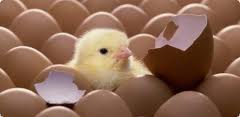Comparative study on productive performance, egg quality, egg geometry and hatching traits of three age groups of indigenous Peshawari Aseel chickens
Keywords:
Indigenous chicken, Peshawari Aseel, Production performance, Egg quality, Egg geometryAbstract
The aim of study was to compare three production cycles of different age groups of indigenous Peshawari Aseel chicken at Indigenous Chicken Genetic Resource Center (ICGRC), UVAS Ravi Campus Pattoki for the duration of 4 weeks. For this Purpose 24 birds of 3 different production cycles (1, 2 and 3 at the age of 35, 65 and 95) were used. Eight birds in each category comprising 7 females and 1 male were placed in each replicate. The data was collected regarding production performance, egg quality and egg geometry and analyzed through Completely Randomized Design (CRD) using analysis of variance (ANOVA) techniques. Means were compared using Fisher’s LSD (Least significant Difference) Test by the help of SAS (Statistical Analysis System). Non-significant differences (P > 0.05) were observed in cumulative feed intake at the start of experiment week 1, week 3 and week 4. The birds in 2nd production cycle remained the highest feed consumer throughout the experimental period followed by 1st and 3rd production cycles along with same trend in calories, protein, Ca, P, Lysine and Methionine intake throughout the experimental period. The birds in 2nd production cycle remained significantly higher egg producer along with production of higher egg mass and better FCR. Non-significant differences (P > 0.05) were observed in the egg shell % of 1st, 2nd and 3rd production cycles. The birds of 3rd production cycle remained the highest in the Haugh unit score and yolk index throughout the experimental period followed by 1st and 2nd production cycle. Non-significant differences (P > 0.05) were observed in shape index, egg surface area and egg volume in all the three production cycles. The birds of 3rd production cycle remained significantly higher in shape index throughout the experimental period followed by the 1st and 2nd production cycle.
References
Brake, J., walsh, T.J., Benton, C.E., Petitte, J.N., Meiherhof, R., Penalva, G., 1997. Egg handling and storage. Poultry
Science 76, 144-151.
Butcher, G., Miles, R., Nilipour, A., 1991. La Calidad del cascaróndelhuevo. Industria.Avicola, 38, 9-10.
Gupta, R.K., Singh, M., Singh, U., Gurung, B.S., 2000. Indian Journal of Animal Sciences. Vol. 70 No. 11 pp. 1170-
Haugh, R., 1937. The Haugh unit for measuring egg quality. US Egg. Poultry Mag., 43, 522-555, 572-573
Haunshi, S., Niranjan, M., Shanmugam, M., Padhi, M.K., Reddy, M.R., Sunitha, R., Rajkumar, U., Panda, A.K., 2011.
Characterization of two Indian native chicken breeds for production, egg and semen quality, and welfare
traits. Poultry Science 90, 314-320.
Hill, A.T., Hall, J.W., 1980. Effects of various combinations of oil spraying, washing, sanitizing, storage time, strain,
and age upon albumen quality changes in storage and minimum sample sizes required for their
measurement. Poultry Science 59, 2237–2242.
Islam, M.A., Bulbuli, S.M., Seeland, G., Islam, A.B., 2001. Egg quality of different chicken genotypes in summer and
winter. Pak. J. Bid. Science, 4, 1411-1414.
Latour, M.A., Peebles, E.D., Doyle, S.M., Pansky, T., Smith, T.W., Boyle, C.R., 1998. Broiler breeder age and dietary
fat influence the yolk fatty acid profiles of fresh eggs and newly hatched chicks. Poultry Science 77, 47-53.
Latour, M.A., Peebles, E.D., Boyle, C.R., Doyle, S.M., Pansky, T., Brake, J.D., 1996. Effect of breeder hen age and
dietary fat on embryonic and neonatal broiler serum lipids and glucose. Poultry Science 75, 965-701.
Littell, R.C., Freund, R.J., Spector, P.C., 1991. SAS_ System for Linear Models.3rd ed. SAS_ Series in Statistical
Applications. SAS Institute Inc., Cary, NC.
Narushin V.G., Romanov, M.N., 2002b. Egg Physical Characteristics and Hatchability. World’s Poultry Science
Journal 58, 297-303
Narushin, V.G., van Kempen, T.A., Wineland, M.J., Chris-tensen, V.L., 2004. Comparing infrared spectroscopy and
egg size measurements for predicting egg shell quality. Biosyst. Eng., 87, 367–373.
Narushin, V.G., 2005. Egg Geometry Calculations Using Measurements of Length and Breadth. Poultry Science 84,
-484
Niranjan, M., Sharma, R.P., Rajkumar, U., Chatterjee, R.N., Reddy, B.L.N., Battacharya, T.K., 2008. Livestock
Research for Rural Development India
Silversides, F.G., Villeneuve, P., 1994. Is the Haugh unit correction for egg weight valid for eggs stored at room
temperature. Poultry Science 73, 50–55.
Silversides, F.G., scott, T.A., 2001. Effect of storage and layer age on quality of eggs from two lines of hens. Poultry
Science 80, 1240-1245.
Singh, R., Cheng, K.M., Silversides, F.G., 2009. Production performance and egg quality of four strains of laying
hens kept in conventional cages and floor pens. Poultry Science, 88, 256-264.
Sokal, R.R., Rholf, F.J., 1995. Biometry. W.H. Freeman and Co. New York
Steel, R.G.D., Torrie, J.H., Dickey, D.A., 1997. Principles and procedures of statistics. A biochemical approach, 3rd
ed. McGraw Hill Book Co. Inc., New York, USA.
Yoshimura, Barua, Y., Olira, A., Heryanto H., Zheng, W., 1997. Reproductive physiology in domestic animals: a basic
knowledge to improve poultry production in Asian countries. Journal of International Development and
Cooperation, Hiroshima University, Vol. 3, pp. 27-41.

Published
How to Cite
Issue
Section
Copyright (c) 2013 A. Sohail, A. Muhammad, J. Hussain, A. Iqbal, M. Usman, A. Rehman, F. Hussnain

This work is licensed under a Creative Commons Attribution-NonCommercial-NoDerivatives 4.0 International License.



